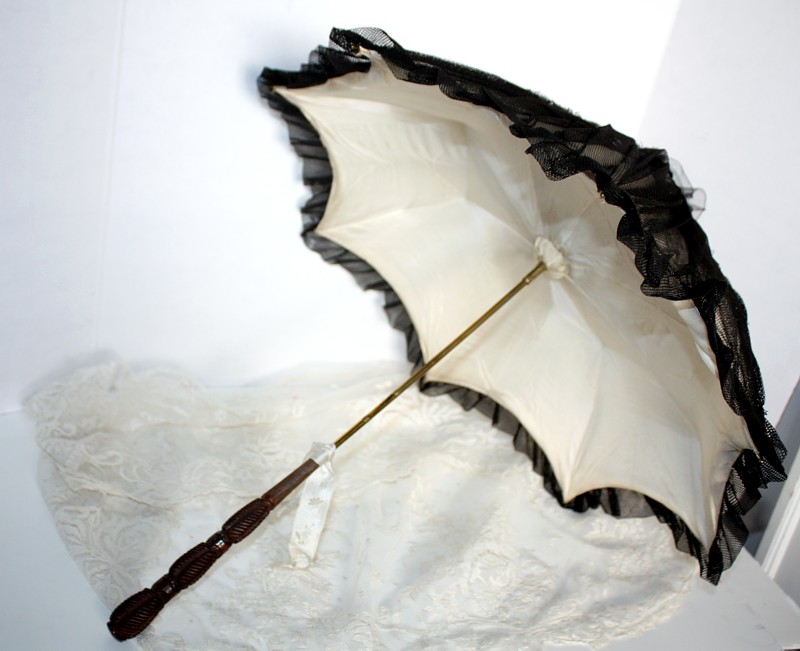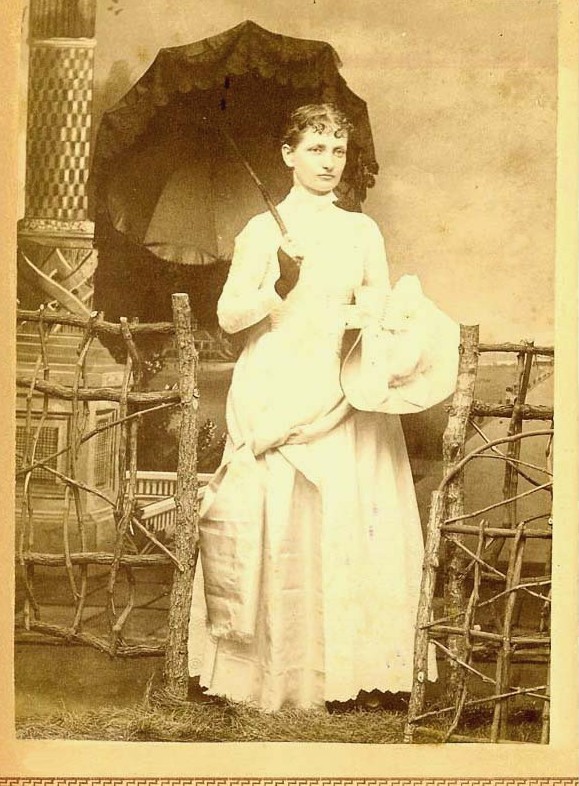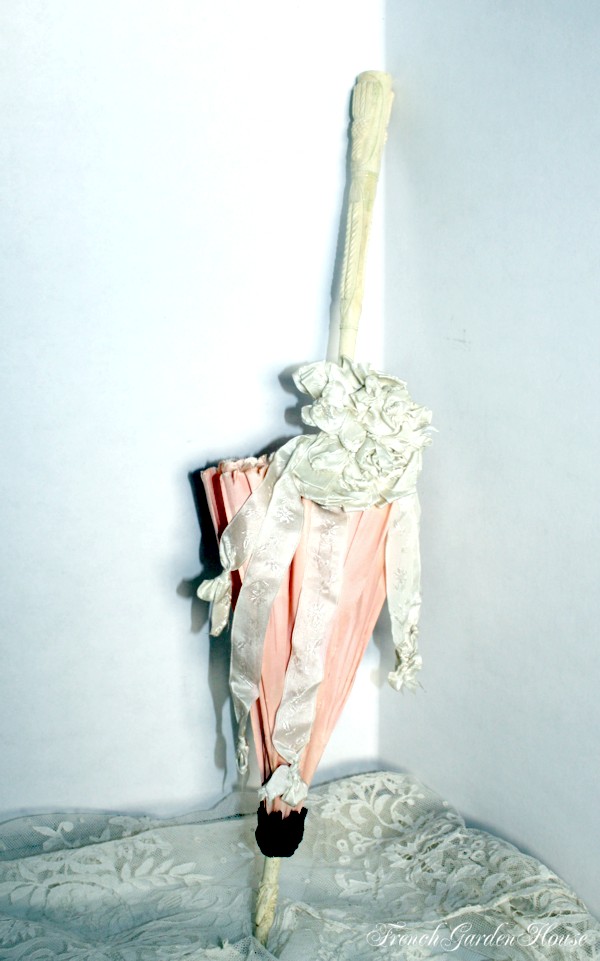
Is there anything more elegant and feminine than a parasol?
The term parasol usually refers to an item intended to protect someone from the sun. { An umbrella refers to a device more suited to protect them from rain.}
The general use of the parasol in France & England was adopted, most likely copied from China, in the middle 1600’s.

In the fashionable Victorian era, a woman who carried an umbrella was publicly admitting she could not afford to own or hire a carriage for transportation when it was raining. In contrast, the woman with a parasol was most assuredly a Lady, she carried it in fair weather not in foul; and if she happened to be riding in a carriage, she made sure her driver pulled down its convertible top, so that her parasol was conspicuously exposed, clearly showing off her position to all who could see her. Parasols were made of the finest French Silk & Lace, with the handles hand carved, a work of art! Often intricately carved of ivory or wood, these parasols were truly exquisite.

Most important to any Victorian Lady was a fair complexion, which made her parasol absolutely necessary. More than a vain sign of beauty, again it proved to the world that a woman was a lady, not some common female who had to work outside. While Hats and Bonnets helped protect delicate skin, after the 1860’s fashion changed to smaller hats and bonnets were shunned as dowdy accessories for matrons and elderly ladies. Parasols became the accessory to own to save a beautiful face from the sun.

Parasols were quite precious and expensive, still, a fashionable woman carried a different one for each outfit. Because they were so very expensive, parasols were one of the most beloved gifts for a lover to give his sweetheart. Like jewelry, they were not a proper present from a young man unless his intentions were quite serious, and would not be accepted by a lady unless she intended to accept the giver, as well. Made in all colors, the ones that have survived are such a joy. Small treasures of days gone by, each is an individual, just like the beautiful lady who owned it once so long ago. We are always thrilled to find a few from an estate collection that we offer for sale, such as the Black French Lace with Silk one above, and the Pink Silk, below.

Sadly, by the roaring 1920’s, a tanned complexion replaced pale skin as a status symbol, indicating that one didn’t have to work and was able to play tennis, sit on the lawn with drinks, or spend the day at the ocean, living a luxurious, care free life. The flappers wore rolled stockings and cloche hats, shorter skirts were in vogue, and parasols were suddenly out of fashion, never to return to their former glorified status again. Still, many of these beauties live out the rest of their days being quite beloved by a collector, inside some of our client’s boudoirs, on display and still greatly adored!
If you want to romance your Home and Garden with antique and vintage treasures to make you smile each time you come home, visit our shop FrenchGardenHouse.

 Your Cart
Your Cart
Thank you for sharing the fascinating history of this fashionable item. Parasols are such pretty reminders of a bygone era.
Have a good weekend, Lidy. I always enjoy visiting your blog!
Lisa
Love this post. I have a parasol that was my great grandmother’s and it’s here in my college dorm. I love it.
Women sure looked so beautiful back then unlike today.
Love this feature a lot! Now I get it why every woman should at least own a lace parasol in her lifetime. Thank you!
I have a parcel umbrella but can’t find out how old it really is.